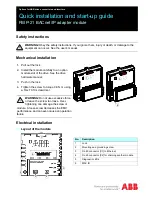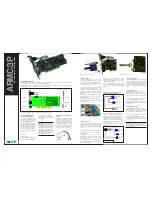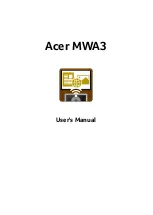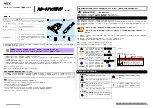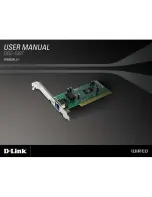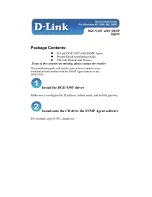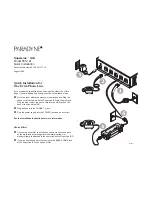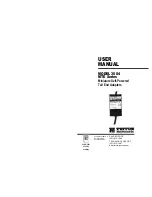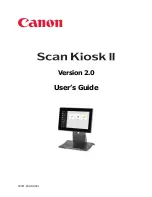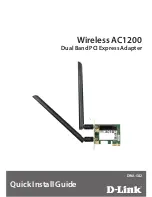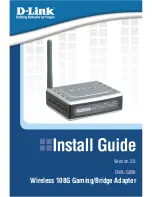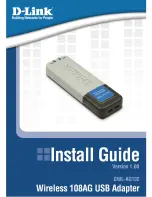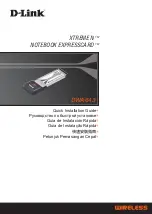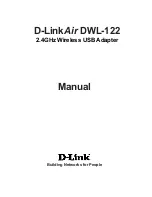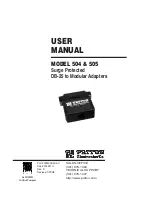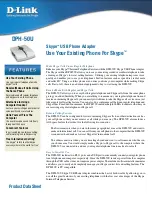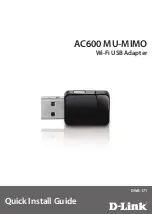
Definitions: Safety Guidelines
The definitions below describe the level of severity for each signal word. Please read the manual and pay
attention to these symbols.
DANGER:
Indicates an imminently hazardous situation which, if not avoided,
will
result in
death or serious
injury
.
WARNING:
Indicates a potentially hazardous situation which, if not avoided,
could
result in
death or
serious injury
.
CAUTION:
Indicates a potentially hazardous situation which, if not avoided,
may
result in
minor or
moderate injury
.
NOTICE:
Indicates a practice
not related to personal injury
which, if not avoided,
may
result in
property
damage
.
IF YOU HAVE ANY QUESTIONS OR COMMENTS ABOUT THIS OR ANY D
e
WALT TOOL, CALL US TOLL FREE
AT:
1-800-4-D
e
WALT (1-800-433-9258)
.
WARNING! Read all safety warnings and all instructions.
Failure to follow the warnings and
instructions may result in electric shock, fire and/or serious injury.
SAVE THESE INSTRUCTIONS
Introduction
The DCA1820 20V Max* Li-Ion battery adapter for 18V NiCd tools (Fig. 2) is designed to accommodate any
D
e
WALT 20V Max* lithium-ion battery pack and can be used to run compatible 18V NiCd tools. This adapter
requires no adjustment and is designed to be as easy as possible to operate. Simply remove the cap provided
with the adapter, slide the adapter into the tool handle, then place your battery pa ck into the bottom of the
adapter. Consult the chart at the end of your tool’s operator’s manual for compatibility of chargers and battery
packs.
WARNING: Refer to the tool’s instruction manual for Important Safety Instructions for All Battery
Packs and All Battery Chargers.
•
Do not use with premium D
e
WALT batteries in the DC970 or DC759.
NOTE:
A cap is provided for use whenever the adapter is out of the tool. Remove cap before
placing the adapter into the tool.
WARNING: Fire hazard. Do not store or carry the adapter with the battery
installed so that metal objects can contact exposed battery terminals.
For example,
do not place adapter with battery installed in aprons, pockets, tool boxes, product kit
boxes, drawers, etc., with loose nails, screws, keys, etc. without cap.
Transporting the
adapter with the battery installed can possibly cause fires if the adapter terminals
inadvertently come in contact with conductive materials such as keys, coins, hand tools and the
like.
The US Department of Transportation Hazardous Material Regulations (HMR) actually prohibit transporting
batteries in commerce or on airplanes in carry-on baggage UNLESS they are properly protected from short
circuits. So when transporting individual battery packs, make sure that the battery terminals are protected and
well insulated from materials that could contact them and cause a short circuit.
OPERATION
WARNING: To reduce the risk of serious personal injury, turn tool off and remove the battery pack
before making any adjustments or removing/installing attachments or accessories.
An accidental start-
up can cause injury.
WARNING: 18V chargers will not charge a 20V Max* li-ion battery pack.
Consult the chart at the end
of your tool operator’s manual for the compatibility of chargers and battery packs.
WARNING: THE ADAPTER IS NOT COMPATIBLE WITH ALL D
e
WALT TOOLS.
The 20V Max* Li-Ion
Battery Pack Adapter for 18V NiCd tools is
NOT COMPATIBLE
with 18V D
e
WALT radios, 18V D
e
WALT nailers,
DC020 or DC022 Worklights, nor the DCS370 Bandsaw. For the DC500 Vacuum, the DW074 and DW079
Rotary Lasers, the adapter is functional but the tools’ battery doors will not fully close.
WARNING: The battery pack must be removed from the adapter before charging. Do not force
or modify the adapter to fit a charger.
Consult the chart at the end of your tool’s operator’s manual for
compatibility of chargers and battery packs. Follow all instructions that came with the battery and charger.
INSTALLING AND REMOVING THE BATTERY PACK (FIG. 1)
NOTE:
For best results, make sure your battery pack is fully charged.
To install the battery pack into the adapter, align the battery pack with the rails inside the bottom of the adapter
and slide it into the adapter until the battery pack is firmly seated. Ensure that it does not disengage. It is
recommended to install the battery into the adapter only after the adapter has been installed into the tool.
To remove the battery pack from the adapter, press the battery pack’s release button (A) and firmly pull the
battery pack out of the adapter. Insert it into the charger as described in the charger section of the tool’s
instruction manual.
INSTALLING AND REMOVING THE ADAPTER (FIG. 2)
NOTE:
For best results, make sure your battery pack is fully charged.
To install the adapter into a compatible tool handle, align the notch inside the tool’s handle with the adapter and
slide the adapter firmly into the handle until you hear the lock snap into place as shown in Figure 2. Ensure that
it does not disengage. It is recommended to remove the battery from the adapter before removing the adapter
from the tool handle.
To remove the adapter from the tool, press the adapter’s release buttons (B) and firmly pull the adapter out of
the tool handle.
SAVE THESE INSTRUCTIONS FOR FUTURE USE
MAINTENANCE
WARNING: To reduce the risk of serious personal injury, turn tool off and remove the battery pack
before making any adjustments or removing/installing attachments or accessories.
An accidental start-
up can cause injury.
CLEANING
WARNING:
Never use solvents or other harsh chemicals for cleaning the non-metallic parts of the adapter.
These chemicals may weaken the plastic materials used in these parts. Use a cloth dampened only with water
and mild soap. Never let any liquid get inside the adapter; never immerse any part of the adapter into a liquid.
REPAIRS
The adapter is not serviceable.
REGISTER ONLINE
Thank you for your purchase. Register your product now for:
•
WARRANTY SERVICE:
Registering your product will help you obtain more efficient warranty service in
case there is a problem with your product.
•
CONFIRMATION OF OWNERSHIP:
In case of an insurance loss, such as fire, flood or theft, your
registration of ownership will serve as your proof of purchase.
•
FOR YOUR SAFETY:
Registering your product will allow us to contact you in the unlikely event a safety
notification is required under the Federal Consumer Safety Act.
Register online at www.dewalt.com/register.
Three Year Limited Warranty
D
e
WALT will repair, without charge, any defects due to faulty materials or workmanship for three years from the
date of purchase. This warranty does not cover part failure due to normal wear or tool abuse. For further detail
of warranty coverage and warranty repair information, visit www.dewalt.com or call 1-800-4-D
e
WALT (1-800-
433-9258). This warranty does not apply to accessories or damage caused where repairs have been made or
attempted by others. This warranty gives you specific legal rights and you may have other rights which vary in
certain states or provinces.
In addition to the warranty, D
e
WALT tools are covered by our:
1 YEAR FREE SERVICE
D
e
WALT will maintain the tool and replace worn parts caused by normal use, for free, any time during the first
year after purchase.
90 DAY MONEY BACK GUARANTEE
If you are not completely satisfied with the performance of your D
e
WALT Power Tool, Laser, or Nailer for any
reason, you can return it within 90 days from the date of purchase with a receipt for a full refund – no questions
asked.
2 YEARS FREE SERVICE ON D
e
WALT BATTERY PACKS
DC9071, DC9091, DC9096, DC9180, DC9182, DC9280, DC9360, DCB120,
DCB127, DCB201, DCB203/BT, DCB207, DCB361
3 YEARS FREE SERVICE ON D
e
WALT BATTERY PACKS
DCB200, DCB204/BT and DCB205
D
e
WALT BATTERY PACKS
Product warranty voided if the battery pack is tampered with in any way. D
e
WALT is not responsible for any
injury caused by tampering and may prosecute warranty fraud to the fullest extent permitted by law.
LATIN AMERICA:
This warranty does not apply to products sold in Latin America. For products sold in Latin
America, see country specific warranty information contained in the packaging, call the local company or see
website for warranty information.
FREE WARNING LABEL REPLACEMENT:
If your warning labels become illegible or are missing, call
1-800-4-D
e
WALT (1-800-433-9258) for a free replacement. Refer to Fig. 3.
D
e
WALT Industrial Tool Co., 701 East Joppa Road, Towson, MD 21286
(JAN16) Part No. N463092 DCA1820 Copyright © 2015, 2016 D
e
WALT
The following are trademarks for one or more D
e
WALT power tools: the yellow and black color scheme; the “D”
shaped air intake grill; the array of pyramids on the handgrip; the kit box configuration; and the array of lozenge-
shaped humps on the surface of the tool.
INSTRUCTION MANUAL
GUIDE D’UTILISA
TION
MANUAL DE INSTRUCCIONES
INSTRUCTIVO DE OPERACIÓN, CENTROS DE SER
VICIO
Y PÓLIZA DE GARANTÍA.
ADVER
TENCIA:
LÉASE ESTE
INSTRUCTIVO ANTES DE USAR EL PRODUCTO.
If you have questions or comments, contact us.
Pour toute question ou tout commentaire, nous contacter
.
Si tiene dudas o comentarios, contáctenos.
1-800-4-D
e
W
AL
T • www
.dewalt.com
DCA1820
20V Max* Li-Ion Battery Pack Adapter for 18V NiCd T
ools
Adaptateur de blocs-piles au Li-Ion 20
v max* pour outil NiCd
18
v
Adaptador para baterías de iones de litio de 20V Max* para
herramientas de 18 V NiCd
Définitions : lignes directrices en matière de sécurité
Les définitions ci-dessous décrivent le niveau de danger pour chaque mot-indicateur employé. Lire le mode
d’emploi et porter une attention particulière à ces symboles.
DANGER :
indique une situation dangereuse imminente qui, si elle n’est pas évitée,
entraînera
la
mort
ou des blessures graves
.
AVERTISSEMENT :
indique une situation potentiellement dangereuse qui, si elle n’est pas évitée,
pourrait
entraîner la
mort ou des blessures graves
.
ATTENTION :
indique une situation potentiellement dangereuse qui, si elle n’est pas évitée,
pourrait
entraîner des
blessures légères ou modérées
.
AVIS :
indique une pratique ne posant
aucun risque de dommages corporels
mais qui par contre, si rien
n’est fait pour l’éviter,
pourrait
poser des
risques de dommages matériels
.
POUR TOUTE QUESTION OU REMARQUE AU SUJET DE CET OUTIL OU DE TOUT AUTRE OUTIL D
e
WALT,
COMPOSEZ LE NUMÉRO SANS FRAIS :
1 800 433-9258 (1-800-4-D
e
WALT)
.
AVERTISSEMENT! lire tous les avertissements de sécurité et toutes les directives.
Le non-
respect des avertissements et des directives pourrait se solder par un choc électrique, un incendie et/
ou une blessure grave.
CONSERVER CES CONSIGNES
Introduction
L’adaptateur de blocs-piles au Li-Ion de 20 v max* pour outil NiCd de 18 v (Fig. 2), a été conçu pour
accommoder tout bloc-piles au lithium-ion D
e
WALT de 20 v max* et peut être utilisé pour alimenter des outils
compatibles NiCd de 18 v. Cet adaptateur ne requiert aucun réglage et a été conçu pour être d’un usage
aussi simple que possible. Retirez simplement le capuchon fourni avec l’adaptateur, insérez l’adaptateur dans
la poignée de l’outil, puis insérez votre bloc-piles au fond de l’adaptateur. Consultez le tableau en fin du guide
d’utilisation de votre outil pour connaître les compatibilités entre chargeurs et blocs-piles.
AVERTISSEMENT : se reporter au guide d’utilisation de l’outil pour obtenir d’importantes
consignes de sécurité propres à tous les blocs-piles et à tous les chargeurs de blocs-piles.
•
Ne pas utiliser avec les bloc-piles prémium D
e
WALT sur les modèles DC970 ou DC759.
REMARQUE :
un capuchon a été fourni pour être utilisé chaque fois que l’adaptateur n’est
pas dans l’outil. Retirer le capuchon avant de placer l’adaptateur dans l’outil.
AVERTISSEMENT : risques d’incendie. Ne pas entreposer ou transporter
l’adaptateur avec un bloc-piles installé pour assurer qu’aucun objet métallique ne
pourra entrer en contact avec les bornes à découvert du bloc-piles.
Par exemple,
éviter de placer l’adaptateur avec un bloc-piles installé sans capuchon dans un tablier,
une poche, une boîte à outils ou un tiroir, etc., contenant des objets tels que des clous,
des vis, des clés, etc.
Le fait de transporter l’adaptateur avec un bloc-piles installé
comporte des risques d’incendie, car les bornes de l’adaptateur pourraient entrer,
par inadvertance, en contact avec des objets conducteurs, tels que : clés, pièces de monnaie, outils
ou autres.
La réglementation sur les produits dangereux (Hazardous Material Regulations) du département
américain des transports interdit, en fait, le transport des piles pour le commerce ou dans les avions (ex : dans
les bagages enregistrés ou à main) À MOINS qu’elles ne soient correctement protégées contre tout court-
circuit. Aussi lors du transport individuel de blocs-piles, s’assurer que leurs bornes sont bien protégées et
isolées de tout matériau pouvant entrer en contact avec elles et provoquer un court-circuit.
UTILISATION
AVERTISSEMENT : pour réduire le risque de blessures graves, éteindre l’outil et retirer le bloc-piles
avant d’effectuer tout réglage et d’enlever ou d’installer tout accessoire.
Un démarrage accidentel peut
provoquer des blessures.
AVERTISSEMENT : les chargeurs de 18 v ne pourront charger des blocs-piles Li-Ion de 20 v max*.
Consultez le tableau en fin du guide d’utilisation de votre outil pour connaître les compatibilités entre chargeurs
et blocs-piles.
AVERTISSEMENT : CET ADAPTATEUR N’EST PAS COMPATIBLE AVEC TOUS LES OUTILS DEWALT.
L’adaptateur de bloc-piles au Li-Ion de 20 v max* pour les outils NiCd de 18 v N’est PAS
COMPATIBLE
avec
les radios
D
e
WALT de 18 v, les cloueuses D
e
WALT de 18 v, les lampes de travail DC020 et DC022 ou les scies
à ruban DCS370. Pour l’aspirateur DC500, les lasers rotatifs DW074 et DW079, l’adaptateur est opérationnel,
mais les portillons du bloc-piles ne fermeront pas complètement.
AVERTISSEMENT : le bloc-piles doit être retiré de l’adaptateur avant d’être rechargé. Ne pas
forcer ou modifier l’adaptateur pour le faire rentrer dans le chargeur.
Consulter le tableau en fin du guide
d’utilisation de votre outil pour connaître les compatibilités entre chargeurs et blocs-piles. Suivre les instructions
venant avec le bloc-piles et le chargeur.
INSTALLATION ET RETRAIT DU BLOC-PILES (FIG. 1)
REMARQUE :
pour optimiser les résultats, s’assurer que le bloc-piles est complètement chargé.
Pour installer le bloc-piles dans l’adaptateur, alignez le bloc-piles sur les rails à l’intérieur de l’adaptateur puis
poussez-le dans l’adaptateur jusqu’à ce qu’il y soit fermement installé. Assurez-vous qu’il n’en sortira pas. Il
est recommandé d’installer le bloc-piles dans l’adaptateur seulement une fois que l’adaptateur a été installé
dans l’outil.
Pour retirer le bloc-piles de l’adaptateur, poussez sur le bouton de libération (A) du bloc-piles et tirez fermement
le bloc-piles hors de l’adaptateur. Insérez-le dans son chargeur comme décrit dans la section relative au
chargeur du guide d’utilisation de l’outil.
INSTALLATION ET RETRAIT DE L’ADAPTATEUR (FIG. 2)
REMARQUE :
pour optimiser les résultats, s’assurer que le bloc-piles est complètement chargé.
Pour installer l’adaptateur dans la poignée d’un outil compatible, alignez les encoches de la poignée de l’outil sur
l’adaptateur et poussez fermement ce dernier dans la poignée (comme illustré en figure 2) jusqu’à ce que le clic
de verrouillage se fasse entendre. Assurez-vous qu’il n’en sortira pas. Il est recommandé de retirer le bloc-piles
de l’adaptateur avant de retirer l’adaptateur de la poignée de l’outil.
FIG. 1
A
FIG. 2
B
FIG. 3



